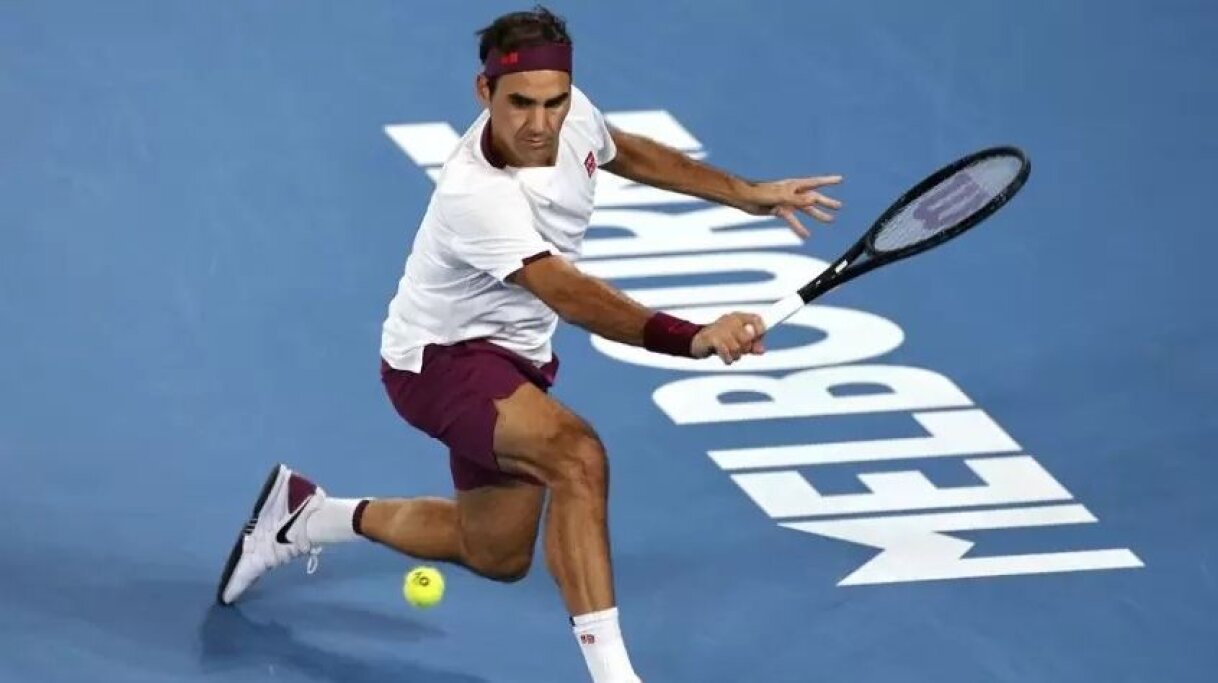History of one-handed backhand and why it’s disappearing
There’s something magical about the one-handed backhand.
When Roger Federer slices through the air or Stan Wawrinka unleashes a thunderbolt from the baseline, tennis fans stop and stare. It’s elegant, powerful, and poetic — yet, slowly fading away.
In modern tennis, the two-handed backhand dominates. The question is: Why is this graceful stroke disappearing?
Let’s take a look back at its history and understand why the one-hander may soon become a rare sight.
Origins: How the one-handed backhand began
In the early days of tennis — the 19th and early 20th centuries — almost every player used a one-handed backhand.
Wooden rackets, heavy balls, and grass courts made this stroke practical. It allowed players to reach further, slice easily, and control rallies.
Legends like Don Budge, Rod Laver, and Ken Rosewall built their games around the one-hander.
It wasn’t just a shot — it was a symbol of style, grace, and technique.
The Golden Era: One-handers at their peak

The one-handed backhand truly reached its peak between the 1970s and early 2000s, when tennis legends such as Björn Borg (in his early career), Stefan Edberg, Pete Sampras, Roger Federer, and Justine Henin on the WTA tour showcased its brilliance.
These players demonstrated how the stroke could be both powerful and graceful, dominating on grass as well as hard courts. The one-handed backhand wasn’t just admired for its effectiveness — it was celebrated for its artistry, timing, and rhythm, representing the perfect balance between strength and elegance in tennis.
Why the two-handed backhand took over
As tennis evolved, so did the game’s technology and speed.
1. Racket and String Technology
Modern rackets are lighter and strings generate more spin. This benefits two-handed players who can handle fast, heavy topspin shots better.
2. Baseline-Dominant Play
Tennis today is more about long rallies from the baseline than net play. The two-handed backhand provides stability and power in those intense exchanges.
3. Coaching Trends
Junior players are often taught the two-hander early because it’s easier to learn and more consistent under pressure.
As a result, fewer young players ever develop a true one-handed backhand.
The advantages that still make it special
Even though it’s rare, the one-handed backhand still has unique strengths:
- Reach: Easier to stretch wide on fast serves.
- Variety: Allows beautiful slices, drop shots, and topspin variations.
- Aesthetics: It’s simply elegant. Fans still consider it the most beautiful stroke in tennis.
The modern masters keeping it alive
Thankfully, a few stars continue to keep the one-hander alive:
- Stan Wawrinka – His explosive topspin backhand is one of the best ever.
- Dominic Thiem – Mixes power and spin beautifully.
- Grigor Dimitrov – Often compared to Federer for his smooth style.
- Richard Gasquet – Famous for his elegant, high-loop backhand.
Each of these players proves that even in the modern era, the one-hander can still dominate when executed perfectly.
Why it’s disappearing from the next generation
Look at the junior circuits or upcoming ATP stars — most use the two-hander.
Why?
- Coaches prioritize efficiency over elegance.
- Faster court speeds and heavy topspin demand more control.
- The physical power needed for a one-hander is higher — especially for players still developing strength.
It’s not that the stroke isn’t effective — it’s just no longer the easiest path to success.
The Future: Can the one-handed backhand survive?
While rare, the one-handed backhand will never truly die.
It may become a specialty weapon — a mark of individuality and creativity, much like a unique signature.
In an era of similar playing styles, the one-hander stands out as a reminder that tennis isn’t just about winning — it’s also about beauty, feel, and personal expression.
Conclusion: The soul of tennis lives on
The one-handed backhand may be disappearing, but its legacy is eternal.
Every time Federer or Wawrinka sends that crisp ball down the line, fans are reminded of tennis’s artistry and evolution.
Whether you’re a casual fan or a hardcore player, the message is clear:
The one-handed backhand isn’t gone — it’s just waiting for the next artist to pick up the brush.
Cover Credits - Tennis World USA


.png)


Leave a Reply